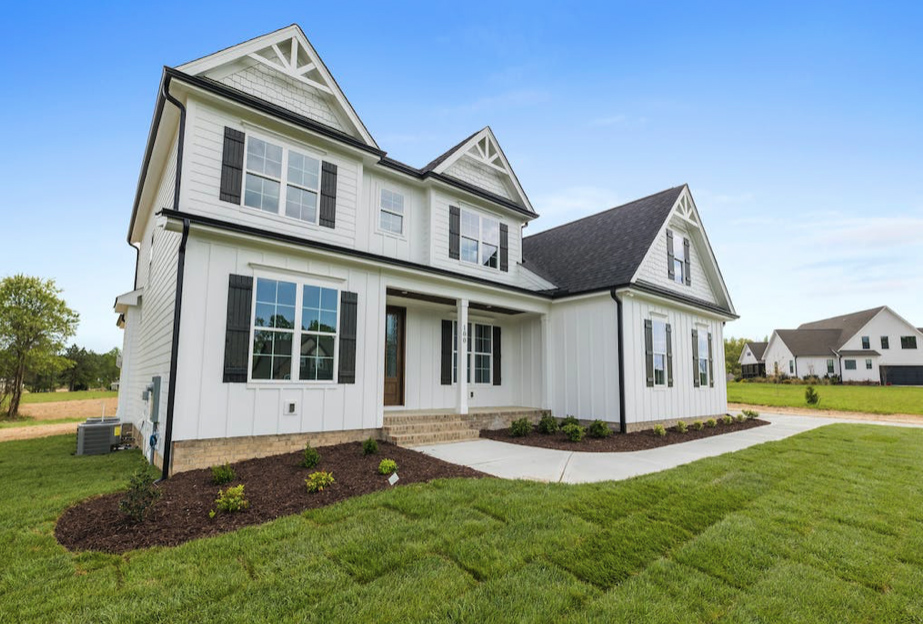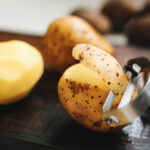Ultimate House Siding Guide: Materials & Maintenance Tips

Photo credit: Curtis Adams
When it comes to choosing the ideal siding for your home, it’s essential to consider factors such as aesthetics, durability, maintenance, and budget. With a wide array of siding materials available, each offering unique benefits and drawbacks, making the right decision can be a daunting task. Explore various house siding options in this comprehensive guide, which delves into pros, cons, and essential maintenance considerations for each siding type.
House Siding Types & Maintenance
Vinyl Siding
Pros: Vinyl siding is one of the most popular and affordable options on the market. It comes in a wide variety of colors and profiles, making it easy to find a style that suits your preferences. The material is low maintenance, requiring only occasional cleaning with mild detergent and water to keep it looking fresh. Additionally, vinyl siding is relatively easy to install, making it a cost-effective choice.
Cons: Despite its popularity, vinyl siding may not be as durable as some other materials. Over time, it can fade or crack, especially when exposed to harsh weather conditions. While vinyl is resistant to moisture and rot, it may be susceptible to damage from impact, such as hail or flying debris.
Maintenance: To maintain vinyl siding, periodic cleaning is essential to remove dirt and debris. Inspecting the siding for cracks or loose panels can help address minor issues before they become significant problems.
Insulated Vinyl Siding
Pros: Insulated vinyl siding offers all the benefits of traditional vinyl siding while providing improved home insulation. The added insulation helps regulate indoor temperatures, leading to energy efficiency and lower energy costs. Like vinyl, insulated vinyl siding is available in various colors and profiles.
Cons: While it improves insulation, insulated vinyl siding may still not match the durability of some other siding materials.
Maintenance: The maintenance requirements for insulated vinyl siding are similar to those of traditional vinyl siding, with periodic cleaning and inspections to ensure its longevity.
LP SmartSide
Pros: LP SmartSide is an engineered hardwood siding known for its exceptional durability and resistance to rot and pests. It can be repainted, offering homeowners design flexibility and the ability to update their home’s appearance easily. The material boasts a wide range of colors, making it suitable for various architectural styles.
Cons: LP SmartSide is a higher-priced option compared to vinyl siding, which may influence some homeowners’ decisions.
Maintenance: Regular inspection of LP SmartSide siding is crucial to identify any signs of damage or wear. Repainting may be necessary over time to refresh the appearance and protect the siding from the elements. Proper moisture control is essential to prevent any potential issues with the material’s longevity.
Hardie Board Siding
Pros: Hardie Board siding, also known as fiber cement siding, is renowned for its exceptional durability and resistance to moisture, fire, and pests. Its color lasts longer, thanks to its unique manufacturing process that locks in the color. Hardie Board can withstand harsh weather conditions and maintain its appearance for extended periods.
Cons: Compared to vinyl siding, Hardie Board is a higher-cost option, which may be a consideration for budget-conscious homeowners.
Maintenance: Regular inspections and prompt repairs are crucial for Hardie Board siding. Occasional repainting may be necessary to refresh the color and protect the material from the elements. Ensuring proper moisture management is vital to prevent any potential issues with the siding’s longevity.
Everlast Composite Siding
Pros: Everlast Composite siding is one of the most durable options available, boasting a ‘length of ownership’ warranty. The material is resistant to fading, rot, and pests, ensuring a long-lasting and attractive appearance for your home. With its sturdy construction, Everlast can withstand harsh weather conditions and maintain its integrity for years.
Cons: The initial cost of Everlast Composite siding may be higher than some other siding materials. Additionally, it offers limited color options compared to other siding choices.
Maintenance: Everlast Composite siding requires minimal maintenance, with occasional cleaning to remove dirt and debris. Unlike wood siding, it does not require repainting, which saves time and effort in the long run.
Natural Wood Siding
Pros: Natural wood siding exudes a timeless and authentic aesthetic that many homeowners find appealing. It provides a warm and inviting look to a home and offers the flexibility to change its appearance with paint or stain. With various wood species available, homeowners can choose the one that best complements their architectural style.
Cons: The primary drawback of natural wood siding is its higher upfront cost compared to other siding materials. Additionally, wood siding requires more frequent maintenance, including repainting or re-staining every few years to preserve its appearance and protect it from the elements. Furthermore, wood siding is susceptible to damage from insects, such as termites, and moisture-related issues like rot.
Maintenance: Regular maintenance of natural wood siding is essential to ensure its longevity and beauty. Homeowners should routinely inspect the siding for signs of wear, damage, or insect infestations. Repainting or re-staining as needed will help protect the wood from weathering and extend its lifespan.
Manufactured Wood Siding
Pros: Manufactured wood siding offers the authentic look of real wood at a fraction of the cost. It is available in various styles, including cedar shakes, engineered wood, and board and batten, providing homeowners with design versatility. This siding option is easier to maintain than natural wood and requires less frequent painting or staining.
Cons: While manufactured wood siding mimics the appearance of real wood, it may not possess the same level of durability. Moisture can be its sworn enemy, leading to mold and mildew growth if trapped behind the siding.
Maintenance: Regular inspections are crucial to identify any signs of water damage or mold. Homeowners should ensure proper moisture management to prevent any potential issues. Occasional cleaning and inspection will help maintain the siding’s appearance and performance.
Metal Siding
Pros: Metal siding is a low-maintenance option that is resistant to bugs, mold, and fire. It offers long-lasting durability and is an environmentally-friendly choice, as it can be recycled after its use.
Cons: In wet or coastal climates, metal siding may be prone to rust, especially for steel siding. Lighter metals, such as aluminum, can be susceptible to dents and damage.
Maintenance: Periodic inspections to check for rust or damage are essential to ensure the siding’s integrity. Keeping the siding clean from dirt and debris will help maintain its appearance and longevity.
Fiber Cement Siding
Pros: Fiber cement siding is a versatile option that can be painted over, allowing homeowners to customize their home’s exterior. It is highly durable, resistant to rot, pests, and harsh weather conditions. Many manufacturers offer extended warranties for fiber cement siding, ranging from 30 to 50 years.
Cons: While fiber cement siding is known for its durability, it may be more expensive than vinyl siding. Additionally, it has a lower R-value, meaning it may not provide the same level of insulation as other siding materials.
Maintenance: Regular inspections and prompt repairs are essential to preserve the siding’s integrity. Occasional repainting can refresh the appearance and protect the material from weathering.
Brick Siding
Pros: Brick siding provides a timeless and elegant aesthetic, known for its low maintenance and fire-resistant properties. It offers excellent temperature control, helping to regulate indoor temperatures and reduce energy costs.
Cons: Brick siding may not offer a wide variety of options compared to other materials. Additionally, mortar joints may require re-mortaring at some point to maintain the integrity of the siding.
Maintenance: Brick siding requires minimal maintenance, with occasional inspections to check for mortar issues. Regular cleaning can help maintain its appearance and protect it from dirt and grime.
Stone Veneer Siding
Pros: Stone veneer siding offers the authentic look of real stone but at a more affordable price. It is lightweight and easy to install, making it accessible for many contractors. Stone veneer can easily be replaced with custom cut sheets, simplifying any repairs or updates.
Cons: Stone veneer is not very environmentally-friendly, as it cannot be recycled like other materials. Weak spots in the installation can allow moisture to get behind the sheets, leading to potential damage.
Maintenance: Regular inspections and prompt repairs are essential to maintain the integrity of stone veneer siding. Ensuring proper installation and sealing will help prevent moisture-related issues and preserve the siding’s longevity.
Each siding option comes with its own set of advantages and drawbacks, so it’s crucial to weigh your preferences and requirements carefully. Choosing the right siding will not only enhance your home’s curb appeal, but also provide lasting protection for years to come.
See other guides on our website to learn about home appliances, interior design, home decor, and more.





